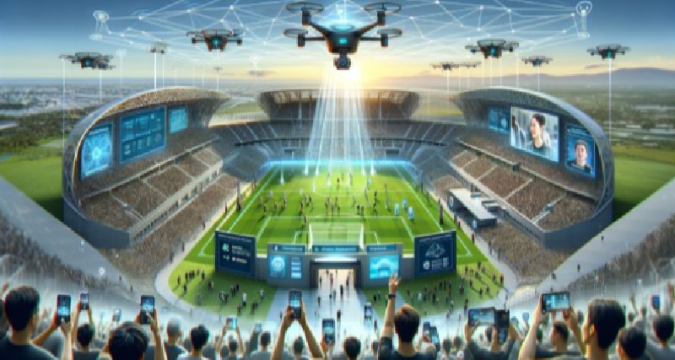
Technological innovations, shifting consumer tastes, and creative commercial strategies are all driving a massive revolution in the sports broadcasting industry. Sports broadcasting is expected to change the way people watch their favorite games and events in the future by becoming more immersive, customized, and participatory than in the past. The main media services technologies that are propelling this development are examined in this article.
The Rise of Streaming Services
One of the most significant changes in sports broadcasting is the rise of streaming services. Traditional cable and satellite TV are gradually being supplemented, and in some cases replaced, by over-the-top (OTT) platforms. Giants like ESPN+, DAZN, and Amazon Prime Video have entered the sports streaming market, offering live and on-demand content. These platforms provide flexibility, allowing fans to watch games on various devices, including smartphones, tablets, and smart TVs. Additionally, streaming services often offer tailored subscription packages, catering to specific sports or even individual teams, which enhances the personalized viewing experience.
Enhanced Viewer Engagement
Modern sports broadcasts are no longer a passive experience. Interactive features are becoming a standard part of the viewing experience, enabling fans to engage with content in real-time. Features like live statistics, multi-angle camera views, and interactive polls allow viewers to dive deeper into the game. Augmented reality (AR) and virtual reality (VR) are also making their way into sports broadcasting, providing immersive experiences that bring fans closer to the action. For instance, AR can overlay real-time stats and graphics on the screen, while VR can offer a 360-degree view from the field, making viewers feel as if they are part of the game.
Advanced Data Analytics
Data analytics is revolutionizing sports broadcasting by providing deeper insights into the game. Advanced algorithms analyze vast amounts of data to generate real-time statistics, player performance metrics, and predictive analysis. Broadcasters can leverage this data to enhance commentary and provide more informative and engaging content. For example, during a football match, broadcasters can use data to highlight a player’s average speed, distance covered, and passing accuracy. This not only enriches the viewing experience but also caters to a more knowledgeable and analytical audience.
Personalization Through AI
Artificial Intelligence (AI) is playing a crucial role in personalizing sports broadcasting. AI algorithms can analyze viewers’ preferences and viewing habits to recommend content tailored to individual tastes. For instance, if a viewer frequently watches basketball, the platform can suggest upcoming basketball games, highlight reels, and related content. Moreover, AI can create personalized highlight packages, condensing hours of footage into a few minutes of the most exciting moments based on what viewers are most likely to enjoy.
Social Media Integration
Social media has become an integral part of sports broadcasting, fostering a more connected and engaged fanbase. Broadcasters often integrate social media feeds into their broadcasts, displaying tweets, comments, and polls during live events. Additionally, user-generated content from social media can provide unique perspectives and enhance the overall viewing experience.
The Role of 5G Technology
With its ultra-fast speeds and low latency, 5G enables seamless streaming of high-definition content, even in crowded stadiums and remote locations. This technology can support more reliable and interactive viewing experiences, including real-time stats, multiple camera angles, and instant replays. Additionally, 5G can facilitate the integration of AR and VR into live broadcasts, providing immersive experiences without lag or interruptions.
The Emergence of E-Sports
Major broadcasters are now covering e-sports tournaments, bringing them to a wider audience. The integration of e-sports into traditional sports broadcasting platforms has expanded the content offering and attracted a younger, tech-savvy audience. This trend is expected to continue growing, with more innovative ways to present e-sports content, such as interactive streams and enhanced viewer engagement features.
Sustainability and Environmental Considerations
As the world becomes more conscious of environmental issues, sports broadcasters are also looking at sustainable practices. Innovations in remote production technology allow for live broadcasts with reduced carbon footprints. Instead of flying large crews and equipment to event locations, broadcasters can now manage production remotely, using advanced cameras and transmission technology.
Streaming services, interactive features, advanced data analytics, AI-driven personalization, social media integration, 5G technology, and the inclusion of e-sports are just some of the key trends shaping the industry. As these technologies continue to evolve, sports broadcasting will become more immersive, engaging, and tailored to individual preferences, ensuring that fans remain at the heart of the action.